Battle of Kings Mountain
Introduction
Text-to-speech Audio
7 October 1780
Continental Victory
In the Fall of 1780, British Maj. Patrick Ferguson led a group of 1,000 Loyalists and Provincial troops on raids throughout the back country of South Carolina. In early October, Ferguson captured a rebel and released him, directing him to notify the community that Ferguson would lay waste to the countryside with “fire and sword” if they did not stop supporting rebels. Ferguson threatened to hang all the rebel leaders and abuse the wives and daughters of all involved. However, this threat did not work as he intended. Infuriated, Patriot militia organized for an attack. Col. William Campbell, commander of the militia units, led 900 men to surround Kings Mountain and engaged Ferguson’s men on 7 October. Ferguson ordered repeated bayonet attacks to drive the rebels back, but they kept returning, gaining footholds on the heights. Ferguson was struck by several rounds and killed, and his men collapsed. It was a major blow to Loyalist support for the British in the backcountry.
Images
Death of Major Ferguson at Kings Mountain
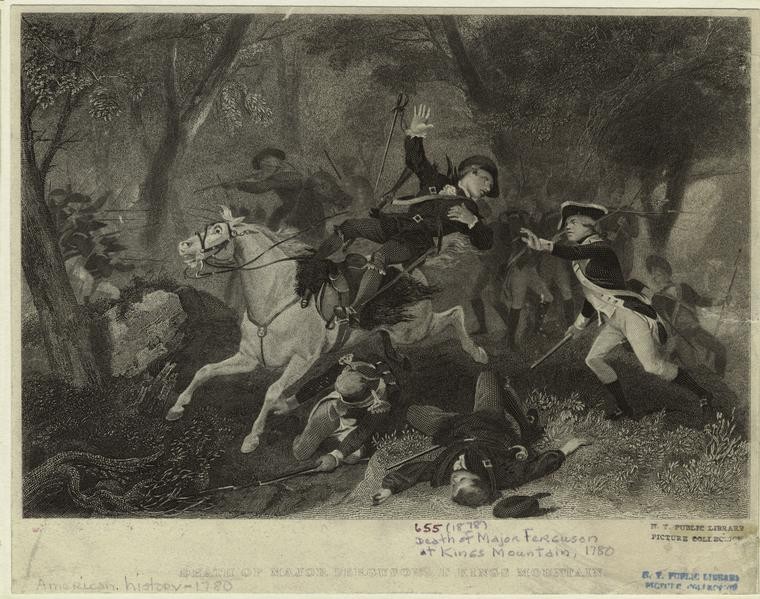
"John Sevier" by Charles Willson Peale, 1791
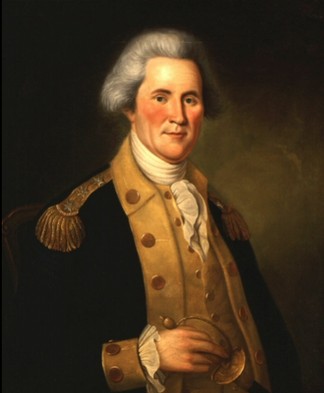
"Gathering of the Overmountain Men at Sycamore Shoals, 1780" by Lloyd Branson, 1915
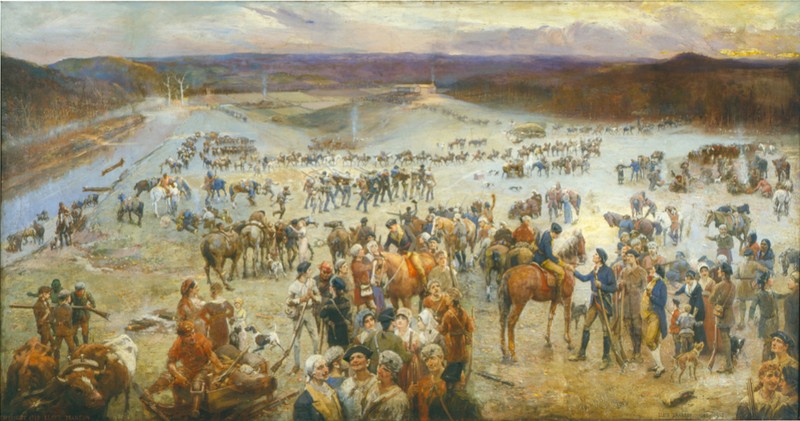
Col. John Sevier's flintlock pistol. This was likely carried by Sevier during the Battle of Kings Mountain.
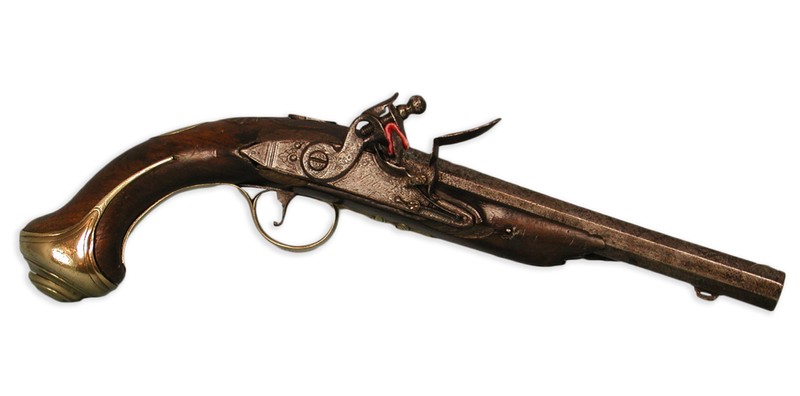
Kings Mountain Surrender Sword. This sword belonged to Capt. Abraham de Peyster of the King's Loyalist troops that fought at the Battle of Kings Mountain. Peyster surrendered the Loyalist forces after Maj. Patrick Ferguson was killed. This sword was used to surrender to Col. William Campbell with a white handkerchief attached. The next day, Campbell gave the sword to Maj. William Edmondson.
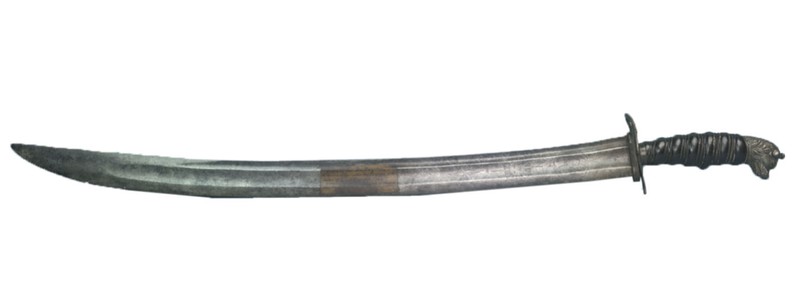
Backstory and Context
Text-to-speech Audio
General Sir Henry Clinton remembered Kings Mountain as "the first… of a Chain of Evils that… at last ended in the total loss of America." Cowed by the fate of their compatriots, North Carolina Tories began to wane in their support of Lt. Gen. Charles, Lord Cornwallis and the British cause. The victory at Kings Mountain not only gave the patriots time to regroup for the campaign that eventually led to Yorktown but also proved a major patriot victory in the vicious struggle for political allegiances in the south. The frontier militia had turned the tide; but having done so, they returned to their homes. Instead, Maj. Gen. Nathanael Greene was tasked to keep the tide moving against the British.
Sources
Boatner, Mark Mayo, Encyclopedia of the American Revolution, Stackpole Books, 1994.
Ferling, John, Almost a Miracle: The American Victory in the War of Independence, Oxford University Press, 2007.
Ferling, John, Whirlwind: The American Revolution and the War the Won It, Bloomsbury Publishing, 2015.
Middlekauff, Robert, The Glorious Cause: The American Revolution, 1763-1789. Oxford University Press, 2005.
Philbrick, Nathaniel, Valiant Ambition: George Washington, Benedict Arnold, and the Fate of the American Revolution, Penguin Books, 2017.
Savas, Theodore P. & J. David. A Guide to the Battles of the American Revolution, New York: Savas Beatie LLC, 2006.
Stewart, Richard W., ed. American Military History. 2nd ed. Vol. 1. American Historical Series. Washington, D.C.: Center of Military History, United States Army, 2009.
Tucker, Spencer, ed. American Revolution: The Definitive Encyclopedia and the Document Collection (5 volumes), ABC-CLIO Publishing, 2018.
The Miriam and Ira D. Wallach Division of Art, Prints and Photographs: Picture Collection, The New York Public Library
Tennessee State Museum
Tennessee State Museum
Tennessee State Museum
Tennessee State Museum
